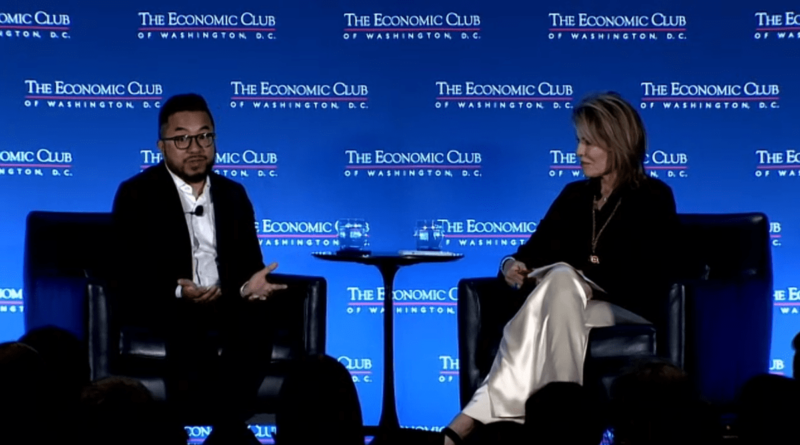Garry Tan has revealed his ‘secret sauce’ for getting into Y Combinator
If you’ve ever wanted to apply to Y Combinator, here’s some inside scoop on how the iconic accelerator goes about choosing companies from someone who knows best: Garry Tan, president and CEO of Y Combinator.
The Economic Club of Washington, D.C. hosted Tan Wednesday for a one-on-one interview with Teresa Carlson, a General Catalyst board member.
It’s widely known that Y Combinator accepts less than 1% of the applications it receives — the last batch was whittled down from 27,000 applications, Tan said. Cohorts these days tend to be around 250 companies. So Carlson wanted to know, among other topics, what is the “secret sauce,” if you will, to getting accepted into Y Combinator?
First, it might be one of the few places where you don’t have to know anyone to get in, Tan said. Anyone can go to the website, apply and submit a one-minute video. YC’s 14 partners read the applications to understand a few things: Who is the applicant’s potential customer and what have the founders built in the past? Top applicants then go on to answer a handful of questions from the partners.
“So many venture capitalists are taking meetings, week-to-week, and saying ‘no, no, no, no,’ and then maybe a few times a year saying, ‘yes,’” Tan said. “YC turns that on its head.”
One of the things YC is looking for is founders who can create a market, that they see a technology no one has envisioned yet, he said.
Tan used Coinbase’s Brian Armstrong as an example of someone who created a market. When Tan first met Armstrong, he was still working as an anti-fraud engineer at Airbnb. Armstrong had read the Satoshi Nakamoto white paper, and had an idea.
“He said, ‘Nobody believes this yet, but I believe it, and I want to work on software that would manifest this crazy idea that you could have a sovereign cryptocurrency,’” Tan said. “This was a very fringe idea at the moment, but that’s what we’re looking for — a fringe thing.”
He went on to explain that the “fringe thing” is a new technology “that deeply technical people are obsessed with” and one that goes on to “touch all of society.”
After the YC partners interviewed and accepted Armstrong into the program, Tan recalls working with him weekly. And during those chats, he realized that if something like Coinbase existed, “that’s gonna be really big.” Then came the discussion about how to build it out.
“The cool thing about what he was doing was that it was really hard to even get Bitcoin,” Tan said. “I personally experienced that. These fringe things can basically turn into something very big.”
He also said that Armstrong was an example of another thing that YC partners look for in candidates: “He was a first principles thinker.” By that Tan meant that Armstrong not only believed what no one believed yet, he set about figuring out what the necessary things were to build, whether that was software or distribution, to create this thing that no one else saw. It’s not enough just to recognize a new thing, you have to understand some of the steps toward building it and have a plan to validate that what you built is solving the problem you originally set out to solve, Tan said.
YC went through a round of interviews last week, and Tan said all of the founders that he chose to fund “came in with some new discovery that they had discovered interacting with the technology itself.”
“Like sitting on a workbench realizing, ‘Hey, did you know there’s a robotics manufacturer that’s making a humanoid robot now for $16,000. It’s arriving on my desk on Monday, and we’re going to try and be the first people that commercialize that,’” Tan said. “That’s an example of a first principles insight that is a very interesting area.”




